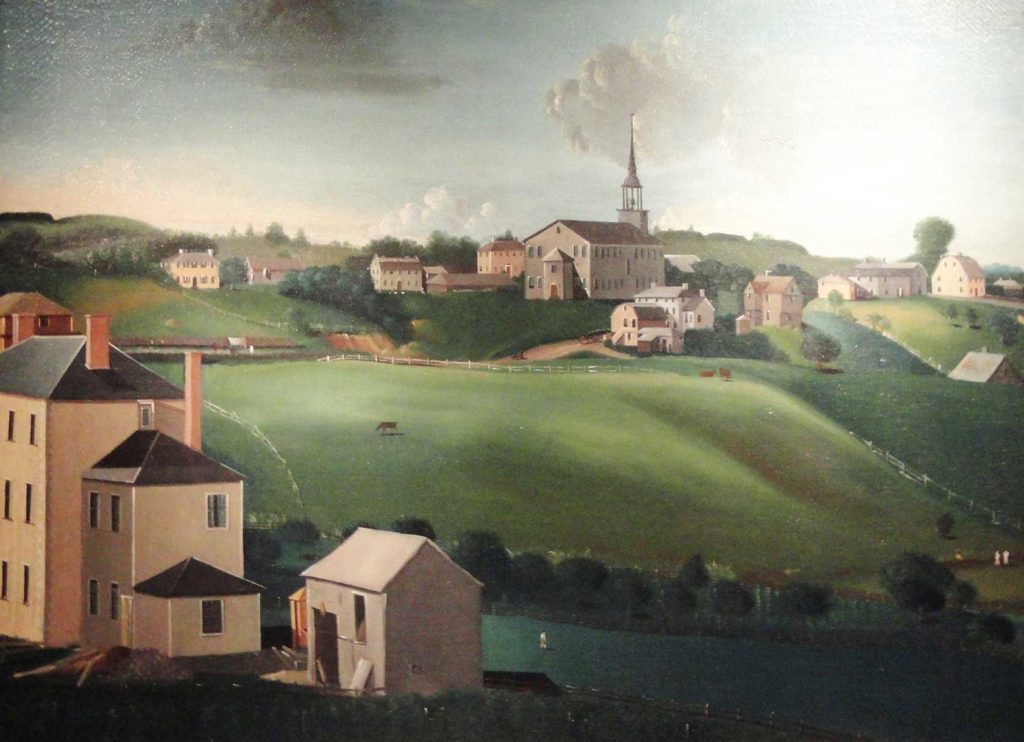
Winner of the Boston Preservation Alliance Award as the best small-scale restoration in Boston in 1991, the Shirley-Eustis house is a grand Georgian Mansion surrounded by vast greenery in the Dudley Street neighborhood. Home of former governor William Eustis, the Shirley-Eustis mansion is also the only remaining country house in America built by a British royal colonial governor — Gov. William Shirley.
The Shirley-Eustis House is a must-see on any tour of Roxbury’s many historical sites.

Joseph Dudley Banner Photo
Founded in 1630, Roxbury was once a suburban village famous for its rich soil, flowers and fruit trees. One of the only towns in the English Colonies not named after an English town, Roxbury was named for its puddingstone — a conglomerate of sedimentary rock that reminded the colonists of pudding.
Eventually the area, which included a portion of the “neck” connecting Boston to the mainland, evolved in the 1700s and 1800s to become a suburb for wealthy Bostonians.
“Blue Hill Avenue looked like a row of mansions. It was one huge mansion after another,” former Shirley-Eustis House curator John Hermanson told the Banner in a 1990s interview.
The “neck” ran from Kneeland Street in present day Chinatown to Berkeley Street, and stretched out to what is today Northampton Street.
Thomas Plant, president of the Roxbury Highland Historical Society, said that most of the land was under water then, so a high tide was life-threatening to many travelers.
“Because it was such a treacherous highway, a second avenue was built into the Roxbury Meetinghouse,” Plant said.
This second avenue, known today as Shawmut, ran into the present-day First Church of Roxbury, which was the meeting house of the town.
Established in 1630, the First Church was modeled after the John Cotton Church in Essex County, England, whose members included Governor Thomas Dudley. The current white structure of the building, built in 1804, towers over the center of Eliot Square.
Gov. Dudley’s name appeared as frequently in Roxbury in the 1600s as it does today. He was one of the most eminent Puritans to land in the Massachusetts colony. Eventually, he followed the Reverends John Eliot and Thomas Welde to the First Church of Roxbury to practice his religion freely and raise one of the most prominent families of the time.
In the mid-1600s, Eliot ran the church for nearly 60 years, while Welde, direct ancestor of former Gov. William Weld, was a minister for about 10 years. The names of both men, and the Dudley family, are engraved on a plaque hanging on the walls of the church today.
Although Dudley was intolerant of non-Puritan religious denominations, two centuries later the First Church transformed itself into a Unitarian Universalist sanctuary.

The Dillaway-Thomas House served as headquarters for Revolutionary War General John Thomas in 1775. Banner Photo
According to historian and state Rep. Byron Rushing, at the end of the 19th century the congregation was split on whether God was unitarian or trinitarian. After a vote, the Unitarians dominated the church and many years later were joined by the Universalists, who believed that everyone would be saved and God was too good to condemn people eternally.
“After the American Revolution, the Unitarians won and kept the building,” Rep. Rushing said. “[First Church] has been Unitarian for over 100 years.”
Dudley fathered a family in Massachusetts that was as prominent as the Kennedys have been in the 20th Century. Famous members of the Dudley clan include Anne Dudley, a poet and wife of Gov. Bradstreet and Joseph Dudley — another Massachusetts governor — as well as a slew of other political figures.
The Dudleys were laid to rest in the Eustis Street Burying Ground at the corner of Washington and Eustis Streets. It was the area’s first graveyard, established just months after the founding of the town of Roxbury. The earliest remaining headstone is that of Samuel Danforth, a prominent pastor recognized for his fiery sermons, dated 1653.
According to Kathryn Coggeshall, project manager of the city’s historic burying grounds initiative, the most prominent families were given their own tombs. Surrounded by a myriad of weathered gray stone heads, the tomb that holds the remains of the Dudley family looks like a grand, concrete casket raised on a platform.

The First Church of Roxbury. Banner Photo
Dillaway-Thomas House
Built by Rev. Oliver Peabody in 1750, the Dillaway-Thomas house, which once served as headquarters for General John Thomas and the Continental Army during the siege of Boston in 1775, sits on a patch of grass surrounded by towering trees. Later in 1835, it became the residential home of Charles K. Dillaway, a famous Harvard professor.
According to Former Dillaway-Thomas House park director Antonio Menefee, the first floor of the house closely resembles its original from the 1700s. In the era of the Revolutionary War, homes were not built with durable material, so the doorways and floors have sunk considerably. The doorways are so slanted that they are no longer rectangular and walking across the rooms in the house feels like ascending or descending a ramp.
After suffering major setbacks, the house is now open for tours and public expositions. A wing was added to the house which will include state-of-the-art equipment for slide shows.
Menefee said that tour buses have come from out-of-state schools to see the house, but many Bostonians have yet to discover the richness of Roxbury’s history.
“People say that if they were blindfolded, placed in the park and the blindfold was removed, they would never believe that they were sitting in Roxbury,” he said.
Historian Tom Plant agrees. “[Roxbury’s history] has been swallowed up by Boston History. People have a strange idea of what Roxbury is, so it’s not really cherished.”






